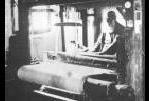|
FAMILY RESEARCH
at the
SCOTLANDS PEOPLE
CENTRE
The primary source for initial research
into your family history is the
ScotlandsPeople Centre in Edinburgh.

Births, Marriages and Deaths (1855 - present
day)
The statutory registration of births,
marriages and deaths began in
1855. The information contained within
the records varied within the first five years, but
after 1860 can be generically summarised
as follows:
BIRTHS:
name of baby, where born, name of mother, name of father, where and
when they were married, usual abode,
name of informant, when and where
registered, and by whom.
MARRIAGES:
location of marriage and denomination type for ceremony, name of
groom, occupation, age, address at where
resident, name of parents, (and whether
still alive), name of bride, occupation,
age, address at where resident, name of
parents, (and whether still alive), witnesses,
minister presiding, when and where
registered, and by whom.
DEATHS:
name of deceased, any marital relationship, age at death, where died,
usual residence, name of parents, when
and where registered, and by whom.
NB: Occasionally entries in the GROS
register will have a note beside them
asking that you consult the REGISTER
FOR CORRECTED ENTRIES. These registers
contain updates from an original entry,
sometimes with corrections, sometimes
with more information, and are always
worth consulting.
_____
Birth, Christening and Marriage sources
(Pre-1855)
The sources used to deal with births,
marriages and deaths are those primarily
created by the Scottish Kirk, namely
the old parochial registers (OPRs) and
the kirk session minutes. The OPRs are
of most use, recording the births,
christenings and marriages (ususally
by the notification of banns) for the parishioners.
Birth example, from Perth, of my great
great great great grandfather:
Sconieburn March Seventh One Thousand
Seven Hundred and Seventy Nine was born William Paton,
Lawfully procreated betwixt John Paton weaver and Ann Watson his spouse and baptized March Eleventh by the Revd Mr Ian Moody Minr at Perth.
Marriage example from Perth:
FEBRUARY 1798
Perth the Third of February One Thousand Seven Hundred
and Ninety eight contracted William Paton, Soldier
in the second battalion of Breadalbanes Fencibles and Christian Hay, Daughter to the Deceased Lauchlan Hay, Resident in Perth,
Parties both in this Parish Elder Thomas Robertson
The Persons before named were regularly proclaimed and married
the seventh day of February said year by Mr Duncan MacFarlan Minister of the Gaelic Chapel in Perth.
________
Deaths (Pre-1855)
Deaths are sometimes noted in old parish
records, though not usually directly - they
tend to be found in mort-cloth lists
or in the session minutes, usually recording the
payment made for the burial.
Monumental Inscriptions
New Register House also holds a large collection of publications containing monumental
inscriptions from throughout Scotland, particularly for the pre-1855 period, which can help to
break through many brick walls in your research.
Census Entries (1841 - 1901)
A census was first taken in the United
Kingdom in 1801, and thereafter every ten
years to the present day, with the only
exception being 1941, during the Second
World War. The census returns for 1801
to 1831 are by and large of no use to
the family historian, as they merely
collated statistical returns for each geographic
area that was enumerated. There are exceptions
to this rule, in that some returns
from 1821 and 1831 did list inhabitants,
and can be found in some of the old
parochial registers held in the National
Archives, whilst others were recorded
in Kirk Session minutes, located at the
National Archives of Scotland. They are
few and far between, and the first
census of real use to the genealogist is that of 1841.
The Scottish census returns from 1841
to 1901 are held at the National Archives
of Scotland and contain valuable
biographical information for each person noted.
The 1841 returns contain the least amount
of information, in that the returns
do not indicate kinship, and the ages
of adults are rounded down to the nearest
five years. But after this, the records
are amazingly precise, and it is possible
to track a family's whereabouts and social
situation over a period of 50 years.
Census Entries (after 1901)
Returns in Scotland from 1911 onwards
are closed by the 100 years rule, and cannot
be viewed at present. However, there
are movements in the rest of the UK towards a
change in this policy. From January 2007
it will be possible to make an application to
the National Archives in England and
Wales for a record from 1911 to be released -
though at present this will be at the
extortionate charge of £45. They will be available
online at a cheaper rate from approximately
2009, three years earlier than originally
planned, due to a recent legal challenge.
Also, in Ireland, Northern
Irish and Southern Irish
census returns from 1911 can be viewed
in Dublin, in the Irish Republic, though ironically enough, they cannot be viewed in
Belfast. The census returns from 1841 to 1891 no longer exist in Ireland, due to both
official pulping of many of the records, and the notorious Four Courts fire of 1922,
that
saw many of the island's records destroyed).

|

